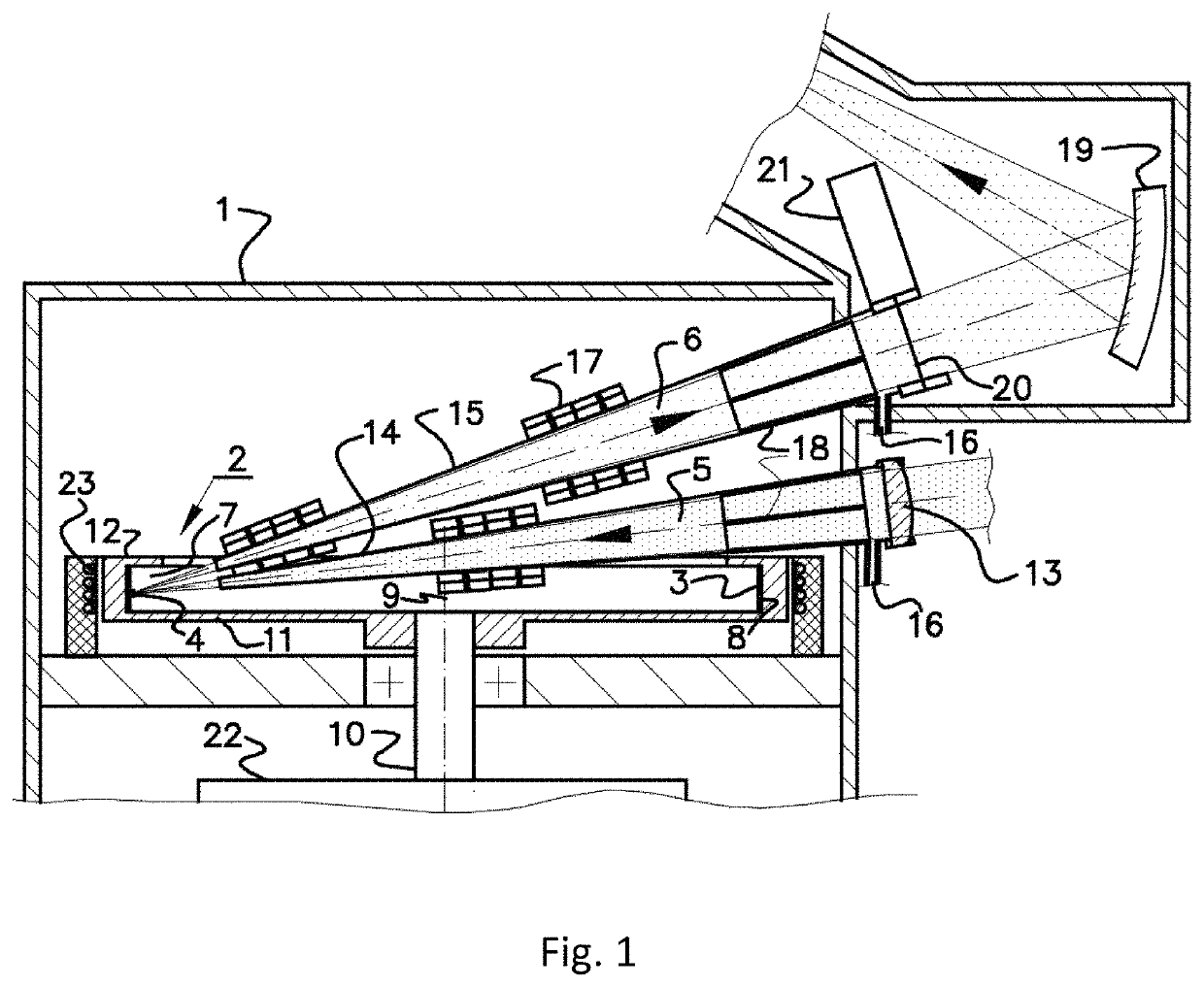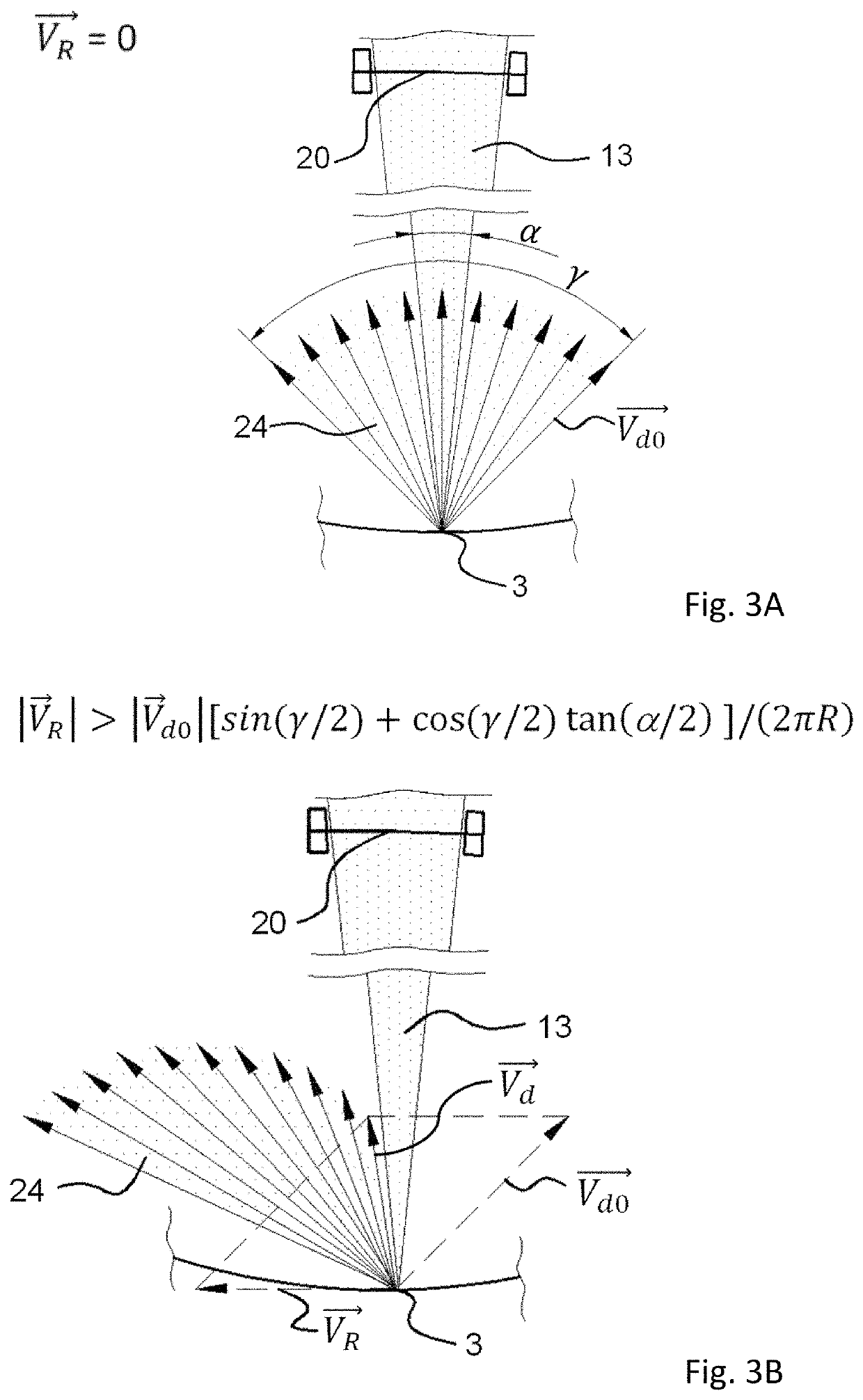High brightness short-wavelength radiation source (variants)
a radiation source and short-wavelength technology, applied in the direction of x-ray tube target materials, electrical discharge tubes, electrical apparatus, etc., can solve the problems of complicating the overall design reducing the service life of the radiation source, so as to improve the service life and reduce the operating cost. , the effect of improving the service li
- Summary
- Abstract
- Description
- Claims
- Application Information
AI Technical Summary
Benefits of technology
Problems solved by technology
Method used
Image
Examples
Embodiment Construction
[0059]In accordance with the example of the invention shown in FIG. 1, a high brightness source of short-wavelength radiation contains: a vacuum chamber 1 with a rotating target assembly 2, supplying target 3 in the interaction zone 4. In the vacuum chamber 1, an energy beam 5 is focused on the target in the interaction zone 4. The short-wavelength radiation generated in the interaction zone 4, intended for use, leaves the interaction zone 4 in the form of a useful beam of short-wavelength radiation 6. Rotating target assembly 2 is made with an annular groove 7, and target 3 is a layer of molten metal formed by centrifugal force on the surface 8 of the annular groove, facing the axis of rotation 9. The energy beam 5 is either an electron beam or a pulsed laser beam. For simplification, the energy source emitting the energy beam 5 on FIG. 1 is not shown.
[0060]At a sufficiently large centrifugal force, the surface of the liquid metal target 3 is parallel to the axis of rotation 9 and ...
PUM
| Property | Measurement | Unit |
|---|---|---|
| linear velocity | aaaaa | aaaaa |
| wavelength range | aaaaa | aaaaa |
| transparency | aaaaa | aaaaa |
Abstract
Description
Claims
Application Information
 Login to View More
Login to View More - R&D
- Intellectual Property
- Life Sciences
- Materials
- Tech Scout
- Unparalleled Data Quality
- Higher Quality Content
- 60% Fewer Hallucinations
Browse by: Latest US Patents, China's latest patents, Technical Efficacy Thesaurus, Application Domain, Technology Topic, Popular Technical Reports.
© 2025 PatSnap. All rights reserved.Legal|Privacy policy|Modern Slavery Act Transparency Statement|Sitemap|About US| Contact US: help@patsnap.com



